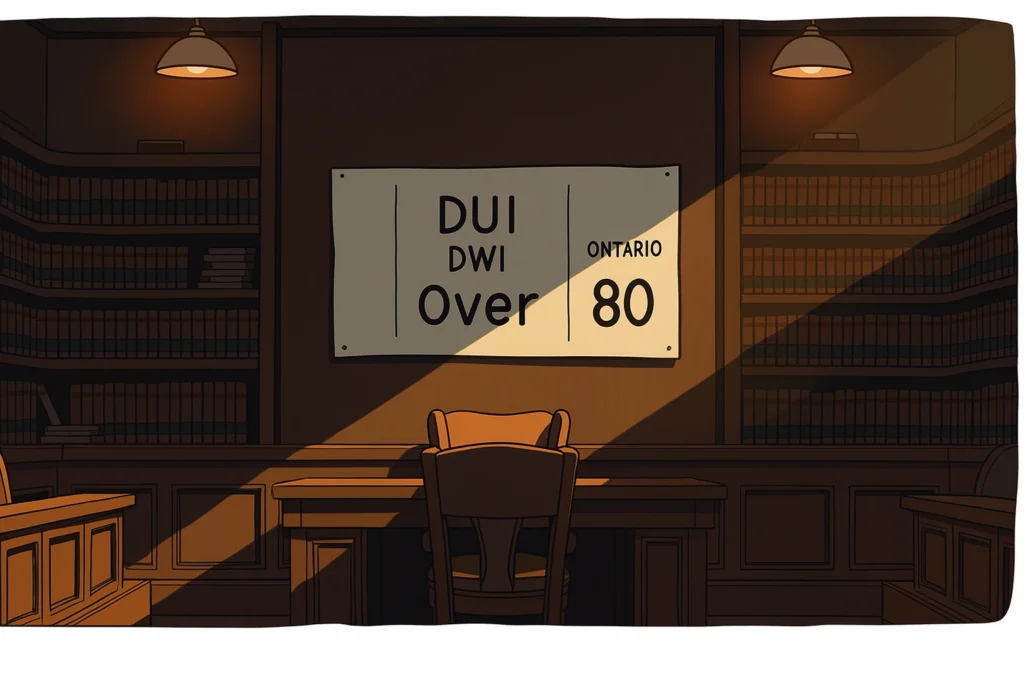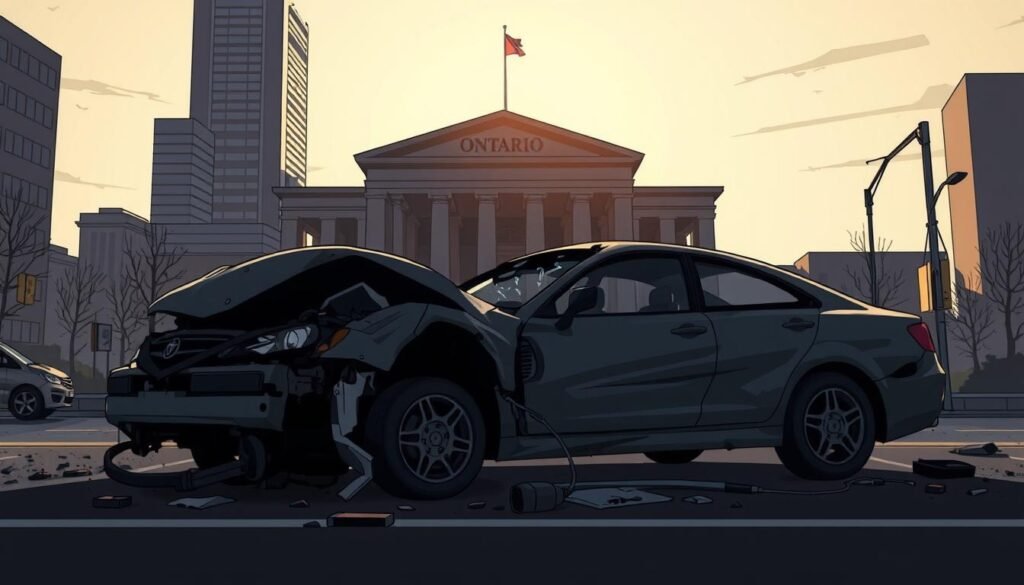DUI vs DWI vs Over 80: What's the Difference in Ontario?

Have you ever wondered why terms like DUI, DWI, and Over 80 seem so confusing? Many drivers in Ontario find themselves puzzled by these legal terms. Understanding them is crucial, especially when it comes to staying on the right side of the law.
In Ontario, these terms are more than just jargon. They represent specific legal offenses related to impaired driving. While some people use them interchangeably, each has its own meaning and consequences. Knowing the distinctions can help you make informed decisions on the road.
Canada’s legal framework is unique, and it differs from the U.S. in how it handles impaired driving cases. This article will break down the informal and legal terms, penalties, and testing procedures you need to know. By the end, you’ll have a clearer picture of what these terms mean and why they matter.
- Understanding the Basics: DUI, DWI, and Over 80
- Legal Definitions in Canada: DUI vs DWI vs Over 80
- Key Differences Between DUI and DWI in Canada
- Penalties for Impaired Driving in Ontario
- How Police Determine Impairment
- Beyond the Courtroom: Broader Impacts of Impaired Driving Charges
- Common Misconceptions About DUI and DWI in Canada
- Making Sense of Impaired Driving Laws in Ontario
- FAQ
Understanding the Basics: DUI, DWI, and Over 80
Navigating the terms DUI, DWI, and Over 80 can feel overwhelming for many drivers. These phrases are often used interchangeably, but they have distinct meanings and legal implications. Let’s break them down to help you understand what they really mean.
What Does DUI Stand For?
DUI stands for Driving Under the Influence. This term is commonly used to describe operating a motor vehicle while impaired by alcohol or drugs. However, it’s important to note that DUI is a colloquial term and not officially defined in the Criminal Code of Canada.
What Does DWI Stand For?
DWI refers to Driving While Impaired. While it’s closer to legal terminology than DUI, it’s still considered informal in Canada. DWI generally implies that a driver’s ability to operate a vehicle is compromised due to alcohol or drugs.
What Is an Over 80 Charge?
An Over 80 charge is a specific offense under Section 320 of the Criminal Code. It applies when a driver’s blood alcohol concentration (BAC) exceeds 80 milligrams of alcohol per 100 milliliters of blood. Unlike DUI or DWI, this charge doesn’t require visible signs of impairment for a conviction.
Understanding these terms is crucial, especially in Ontario, where zero-tolerance laws for novice drivers are strictly enforced. Knowing the distinctions can help you stay informed and avoid serious legal consequences.
Legal Definitions in Canada: DUI vs DWI vs Over 80
Understanding the legal nuances of impaired driving terms is essential for every driver. In Canada, these terms are more than just words—they carry significant legal weight. The Criminal Code outlines specific offenses related to impaired driving, each with its own set of consequences.
How Canadian Law Defines Impaired Driving
Under Section 320 of the Criminal Code, impaired driving offenses are clearly defined. These include:
- Impaired Operation: Operating a vehicle while under the influence of alcohol or drugs.
- Over 80: Driving with a blood alcohol concentration (BAC) exceeding 80 milligrams of alcohol per 100 milliliters of blood.
- Refusal: Failing or refusing to comply with a demand for a breath or blood sample.
- Care or Control: Being in care or control of a vehicle while impaired, even if not driving.
These offenses carry severepenalties, including fines, license suspensions, and even imprisonment.
The Evolution of Impaired Driving Terminology
Impaired driving laws in Canada have evolved significantly over the years. In 1921, the first offense was called "driving while intoxicated," with a minimum jail sentence of seven days. By 1925, the law was amended to include narcotics, and the term changed to "impaired."
Despite its historical roots, "DWI" never gained legal traction in Canada. Instead, "impaired" became the standard term. In 2018, amendments to the Criminal Code introduced mandatory alcohol screening, allowing police to test drivers without suspicion.
Interestingly, "DUI" remains a popular term, even though it’s not officially defined in the Criminal Code. Its widespread use highlights the importance of understanding legal definitions to avoid confusion and serious consequences.
Key Differences Between DUI and DWI in Canada
Many drivers find themselves tangled in the web of impaired driving terminology. While terms like DUI and DWI are often used, their meanings can vary depending on context. Understanding these distinctions is crucial to avoid confusion and potential legal pitfalls.

Informal vs Legal Terminology
In Canada, impaired driving is the official term used in the Criminal Code. However, colloquial terms like DUI (Driving Under the Influence) and DWI (Driving While Impaired) are widely used in everyday conversations. These informal terms often stem from American media and culture, where they hold specific legal meanings.
Provincial laws, such as Ontario’s Highway Traffic Act, use phrases like "impaired operation" instead of DUI or DWI. Police reports also avoid these informal terms, focusing on precise legal language. This contrast between slang and legal terminology can lead to misunderstandings about the consequences of impaired driving.
How DUI and DWI Are Used in Everyday Language
Despite their informal status, DUI and DWI are deeply ingrained in public discourse. Media and pop culture often perpetuate these terms, creating a disconnect between everyday language and legal definitions. For example, many people use DUI and DWI interchangeably, unaware that neither is officially recognized in Canadian laws.
This casual usage can be risky. Misunderstanding the terms might lead drivers to underestimate the severity of penalties. For instance, novice drivers in Ontario face a zero-tolerance policy, while the general legal limit is 80 milligrams of alcohol per 100 milliliters of blood. Knowing the correct terminology can help drivers make informed decisions and avoid serious consequences.
Penalties for Impaired Driving in Ontario
Facing penalties for impaired driving can be daunting for any driver. In Ontario, the consequences are severe and designed to discourage risky behavior. Whether it’s your first offense or a repeat violation, understanding the penalties can help you make better decisions on the road.

First-Time Offenses: What to Expect
For first-time offenders, the penalties are strict. You could face a fine of $1,000 or more, along with a one-year licence suspension. Additionally, you may be required to install an ignition interlock device in your vehicle for a year. This device prevents your car from starting if it detects alcohol in your system.
Ontario also mandates participation in the Back on Track education program, which costs over $1,435. This program aims to educate drivers about the dangers of impaired driving and reduce repeat offenses.
Repeat Offenses: Escalating Consequences
Repeat offenders face even harsher penalties. A second offense could result in a minimum of 30 days in jail and a three-year licence suspension. Insurance premiums may skyrocket by 100-300% and remain high for five years or more. These escalating consequences highlight the importance of avoiding impaired driving altogether.
Zero Tolerance Laws for Novice Drivers
In Ontario, while the criminal limit for most drivers is 0.08% BAC, those with a BAC between 0.05% and 0.079% can face immediate administrative penalties, such as a three-day licence suspension for a first offence. It's especially important to note that young and inexperienced drivers (under 21, or G1/G2/M1/M2 licence holders) are subject to a zero-tolerance policy – meaning any alcohol in their system is prohibited. This strict approach aims to protect all road users from the dangers of impaired driving.Novice drivers in Ontario are subject to zero-tolerance laws. If your blood alcohol concentration (BAC) is between 0.00 and 0.08 milligrams per 100 milliliters of blood, you could face an immediate three-day licence suspension. This strict policy aims to protect young and inexperienced drivers from the dangers of impaired driving.
Commercial drivers also face stricter penalties compared to the general population. Understanding these laws can help you stay compliant and avoid serious legal and financial repercussions.
How Police Determine Impairment
Police use specific methods to determine if a driver is impaired on the road. These methods are designed to ensure accuracy and fairness while keeping the public safe. From roadside tests to advanced equipment, officers follow strict protocols to assess impairment.

Roadside Sobriety Tests
One of the first steps officers take is conducting a Standardized Field Sobriety Test (SFST). This test includes tasks like walking in a straight line or standing on one leg. These tasks help officers observe signs of impairment, such as balance issues or slurred speech.
While SFSTs are widely used, their accuracy depends on proper administration. Officers must have reasonable grounds to suspect impairment before requesting these tests. This ensures that drivers are treated fairly during the process.
Breathalyzer and Blood Alcohol Concentration (BAC)
If an officer suspects impairment, they may ask the driver to provide a breath sample using a breathalyzer. Devices like the Draeger 9510 and Alco-Sensor FST are commonly used to measure blood alcohol concentration (BAC).
In Canada, drivers must comply with breathalyzer requests. Refusing to provide breath can lead to serious penalties, similar to those for impaired driving. The legal limit for BAC is 80 milligrams of alcohol per 100 milliliters of blood.
Drug Recognition Evaluations
For drug-related impairment, officers use a 12-step Drug Recognition Evaluation (DRE) protocol. This process includes physical tests, eye examinations, and interviews to identify drug use. As of 2023, over 2,500 officers in Canada are trained in DRE techniques.
Approved Drug Screening Equipment (ADSE) was introduced in 2018 to test for THC levels. This equipment ensures that drug impairment is assessed accurately and fairly. Drivers suspected of drug use may also be asked to provide blood or urine samples within a three-hour window.
Beyond the Courtroom: Broader Impacts of Impaired Driving Charges
The aftermath of impaired driving charges extends far beyond legal penalties. These charges can affect your finances, career, and personal life in ways you might not expect. Understanding these broader impacts can help you make informed decisions and prepare for the challenges ahead.
Financial Burdens: Fines and Insurance Premiums
Impaired driving charges come with significant financial burdens. For a first offense, total costs can exceed $20,000 when you factor in fines, legal fees, and increased insurance premiums. Ontario’s Ministry of Transportation also requires reinstatement fees of $281 for your licence and $130 for an ignition interlock device.
Insurance companies often view impaired driving as a high-risk behavior. This can lead to premium increases of 100-300%, which may last for several years. These consequences can strain your budget and make it harder to recover financially.
Employment and Travel Restrictions
A criminal record from impaired driving can limit your job opportunities. According to recent data, 78% of employers conduct criminal checks for driving-related positions. Even non-driving roles may be affected, as some companies have strict policies against hiring individuals with criminal records.
Traveling to the U.S. can also become complicated. Impaired driving charges may result in lifetime inadmissibility without a waiver. The U.S. Entry Waiver process costs $585 USD and is valid for 1-5 years. These travel restrictions can disrupt personal and professional plans.
Personal and Family Stress
The emotional toll of impaired driving charges can be overwhelming. Family relationships may suffer, especially if child custody or immigration applications are involved. The stress of dealing with legal proceedings and societal stigma can also take a toll on mental health.
As one expert noted,
"The ripple effects of impaired driving charges often extend far beyond the individual, impacting families and communities."
Seeking support from loved ones and professional resources can help manage these challenges.
Common Misconceptions About DUI and DWI in Canada
Many people misunderstand the legal terms surrounding impaired driving in Canada. These misconceptions can lead to confusion and even legal trouble. Let’s clear up some of the most common myths.
Is DUI a Legal Term in Canada?
Contrary to popular belief, DUI is not a legal term in Canada. While it’s widely used in everyday language, the Criminal Code refers to these offenses as "impaired driving." This distinction is important because it affects how charges are applied and understood.
Can You Be Charged Without Driving?
Yes, you can face charges even if you’re not actively driving. The concept of care and control means that simply being in a motor vehicle with the ability to drive can lead to penalties. For example, having the keys in the ignition is considered prima facie evidence of care and control.
In the landmark case of R. v. Boudreault (2012), the Supreme Court clarified that even sleeping in a car while impaired can result in charges. This debunks the common defense strategy of "sleeping it off" in a vehicle.
- Uber or Lyft drivers waiting for fares can still face charges if they’re impaired.
- Passengers assisting an impaired driver may also be held accountable.
- An over 80 charge applies even if the driver appears sober, as it’s based on blood alcohol concentration.
Understanding these nuances can help you avoid serious legal consequences. Always stay informed and make safe choices on the road.
Making Sense of Impaired Driving Laws in Ontario
Impaired driving laws in Ontario can be complex, but understanding them is essential for every driver. While terms like DUI are often used informally, offenses like Over 80 are specific to blood alcohol concentration under the criminal code. Knowing your rights and the legal implications can help you navigate these charges effectively.
If you’re facing Section 320 charges, securing legal representation is crucial. Experienced lawyers can evaluate your case and guide you through the process. For case evaluations, contact X-COPS/Mass Tsang to ensure your rights are protected.
Remember, impaired driving convictions must be reported during insurance renewals. This can lead to higher premiums and other financial burdens. Installing an ignition interlock device may be required, adding to the challenges.
If you’re unsure about your situation, reach out for a free consultation with DUI lawyers. They can help you understand the legal limit and other aspects of impaired driving laws. Staying informed and seeking professional advice is the best way to protect yourself on the road.
FAQ
What Does DUI Stand For?
What Does DWI Stand For?
What Is an Over 80 Charge?
How Does Canadian Law Define Impaired Driving?
Are DUI and DWI Formal Legal Terms in Canada?
What Are the Penalties for a First-Time Impaired Driving Offense?
How Do Police Test for Impairment?
Can You Be Charged Without Driving?
What Are the Broader Impacts of Impaired Driving Charges?
Is There Zero Tolerance for Novice Drivers?
Interested in similar topics to DUI vs DWI vs Over 80: What's the Difference in Ontario?? Explore more in the Understanding DUI category.


Leave a Reply